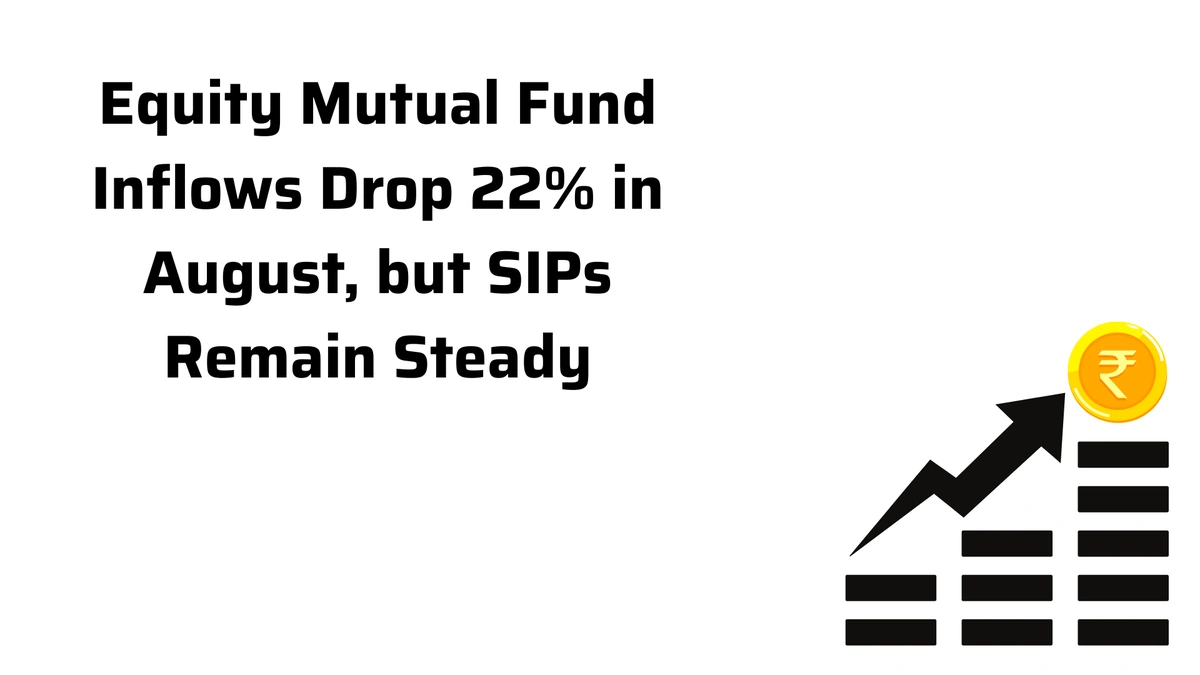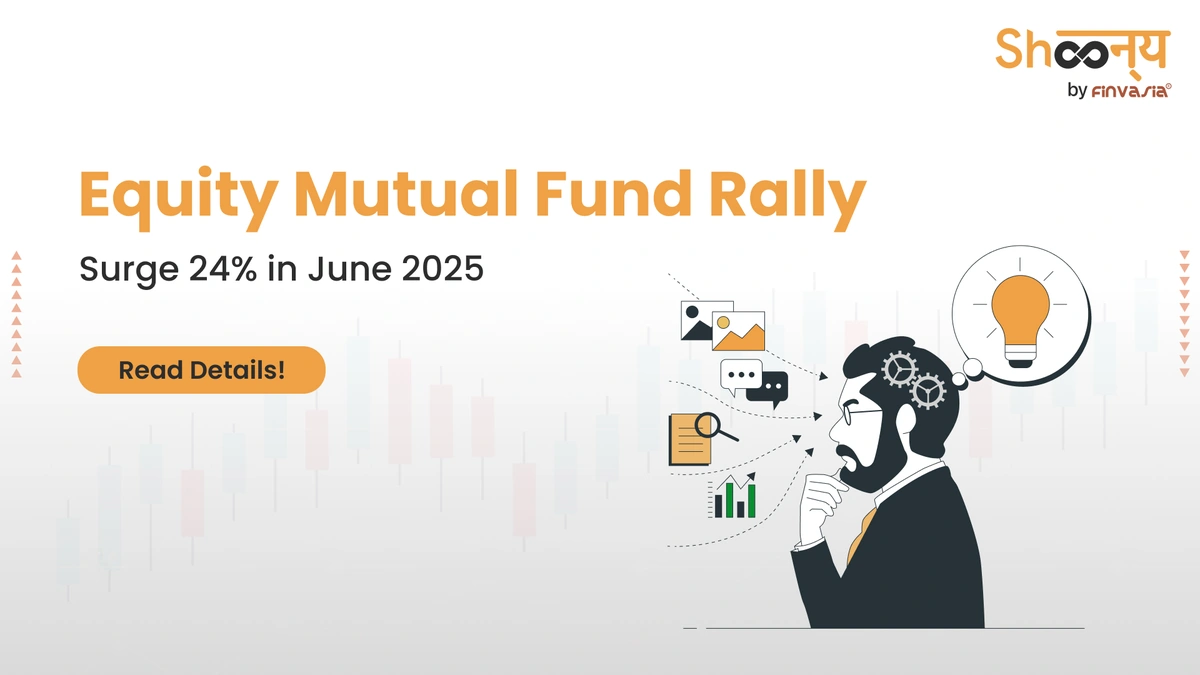September Equity Mutual Fund Inflows Down 9% to Rs 30,421.69 Crore
So, the latest numbers are in, and equity mutual fund inflows took a bit of a dip in September. Down 9% to Rs 30,421.69 crore, to be precise. Now, on the surface, that might seem like just another financial headline. But here’s the thing: these numbers tell a story about investor sentiment, market dynamics, and maybe even a little bit about the collective mood of India’s financial landscape. What fascinates me is not the number itself, but what’s behind it.
Why the Dip? Decoding the September Slowdown

Let’s be honest: a 9% drop isn’t exactly a market crash. But it’s significant enough to warrant a closer look. Why did equity mutual fund investments cool off a bit in September? Several factors could be at play. One major reason often cited is profit booking. Investors, especially retail ones, might have decided to cash in on the gains they’ve accumulated over the past few months. Think about it – the market had been on a pretty good run, so some folks probably thought it was a good time to take some money off the table. This is also tied to increased market volatility , which can trigger investors to rethink their positions. Another factor might be concerns about global economic headwinds or rising inflation. Remember, the Indian market doesn’t exist in a vacuum; it’s influenced by what’s happening around the world.
But, there’s a crucial point many miss. September often sees increased spending due to festivals. It’s plausible that some investors directed funds towards festive shopping rather than investments. Makes sense, right? Buying that new TV or gold during Diwali is definitely tempting. This is why, understanding these nuances makes you a smarter investor – it’s not just about following trends but understanding why those trends exist.
The Broader Picture | Are We Still Bullish on Indian Equities?
So, one month’s data doesn’t make a trend. While September saw a decrease, it’s important to look at the longer term. The overall sentiment towards Indian equities remains largely positive. The Indian economy is still growing, albeit with some challenges, and many analysts believe that the long-term growth story is still intact. Also, look at the SIP inflows. Systematic Investment Plans (SIP) are still going strong, which shows that retail investors are continuing to invest regularly in mutual funds. This consistency is a good sign, indicating that people are still confident in the market’s potential. If you’re a long-term investor, a short-term dip like this shouldn’t necessarily cause panic. But – and this is a big ‘but’ – it’s always a good idea to review your portfolio and make sure it aligns with your risk tolerance and financial goals. Remember to consider all of your options before making a decision .
How to Navigate Market Fluctuations Like a Pro
Okay, so the market goes up and down – that’s a given. The real question is, how do you, as an investor, navigate these fluctuations without losing sleep? First off, diversification is key. Don’t put all your eggs in one basket. Spread your investments across different asset classes, sectors, and geographies. This way, if one area underperforms, others can cushion the blow. Second, stay informed, but don’t get obsessed with daily market movements. It’s easy to get caught up in the noise, but try to focus on the big picture. Read reliable financial news sources, consult with a financial advisor if needed, and make informed decisions based on your own research and understanding. A common mistake I see people make is reacting emotionally to market dips. Instead of panicking and selling, consider it an opportunity to buy more at a lower price – a strategy known as dollar-cost averaging.
What fascinates me is, many investors also overlook the expense ratio. Choose funds with lower expense ratios, especially for long-term investments, to maximize your returns. It might seem small, but those percentages add up over time. Consider different types of funds. While equity mutual funds offer high growth potential, they also come with higher risk. Debt funds, on the other hand, are generally less risky but offer lower returns. Hybrid funds strike a balance between the two. Finally, and I can’t stress this enough, rebalance your portfolio periodically. This means adjusting your asset allocation to maintain your desired risk level. For example, if your equity allocation has increased significantly due to market gains, you might want to sell some equity and buy more debt to bring it back in line with your original plan.
Understanding the Role of SEBI and Market Regulation
Of course, none of this happens in a regulatory vacuum. SEBI (the Securities and Exchange Board of India) plays a critical role in regulating the Indian financial markets and protecting investors. SEBI sets the rules of the game, ensures transparency, and takes action against market malpractice. For instance, SEBI has been cracking down on mis-selling of financial products and promoting investor awareness initiatives. This regulatory oversight is crucial for maintaining investor confidence and ensuring the integrity of the market. Remember, a well-regulated market is a stable market, and a stable market is good for everyone.
The one thing you absolutely must double-check about the fund before investing is the credentials of the fund manager. Check their historical performance and expertise. Are they experienced in managing funds through various market cycles? Are they transparent about their investment strategies? Also, be wary of schemes promising unrealistic returns. If it sounds too good to be true, it probably is. Always read the offer document carefully and understand the risks involved before investing.
So, where do we go from here? It’s impossible to predict the future with certainty, but I think the long-term outlook for Indian equities remains positive. The Indian economy has its challenges, but it also has a lot of potential. The key, as always, is to stay informed, stay diversified, and stay disciplined. Don’t let short-term market fluctuations derail your long-term financial goals. And remember, investing is a marathon, not a sprint. Slow and steady wins the race, especially when you are choosing the right investment strategy . Plus, if you are still confused with your decision, don’t forget to take advice from your financial advisor. It’s important to fully comprehend what you are doing .
FAQ Section
Frequently Asked Questions
What happens if the market crashes?
Market crashes are scary, but they’re also a part of investing. Don’t panic! Review your portfolio, rebalance if needed, and consider it a long-term opportunity.
How much should I invest in equity mutual funds?
It depends on your risk tolerance, time horizon, and financial goals. A financial advisor can help you determine the right amount.
Are SIPs better than lump-sum investments?
SIPs are great for disciplined investing and averaging out market volatility. Lump-sum investments can be good if you have a large sum and believe the market is undervalued.
What are direct mutual funds?
Direct mutual funds have lower expense ratios because they don’t involve intermediaries. You can invest in them directly through the fund’s website.
How do I choose the right mutual fund?
Consider your investment goals, risk tolerance, and time horizon. Compare different funds based on their past performance, expense ratios, and fund manager experience.
Ultimately, the world of finance might seem complicated, but it’s all about understanding risks, weighing options, and staying the course. Think of investing as planting a tree – it takes time, patience, and a bit of faith to see it grow into something beautiful.













